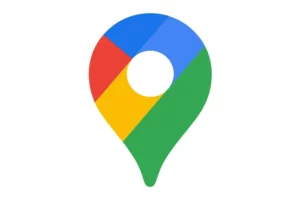Google has recently introduced a groundbreaking program called “External Offers” for Android app developers in Europe. This program is set to revolutionize the way developers offer in-app purchases to their users by allowing them to provide alternative payment options, effectively bypassing Google Play’s billing system. This significant shift in Google’s policy comes as a direct response to a recent European Union (EU) ruling that deemed Google’s practice of mandating the use of its billing system for all in-app purchases as anti-competitive.
The Mechanics of the External Offers Program
The External Offers program empowers developers to offer their users a limited number of alternative payment options within their apps. These alternative payment options must adhere to Google’s guidelines and receive approval from the company. Developers also have the option to continue using Google Play’s billing system alongside the external payment options, providing them with greater flexibility.
When a user selects an external payment option, they are redirected outside of the Google Play app and directed to the website or app of the external payment provider. The user then completes the payment transaction on the external payment provider’s platform. Once the payment is successfully processed, the user is seamlessly returned to the Google Play app, ensuring a smooth user experience.
Fees and Pricing Structure
Developers who opt to use the External Offers program will be subject to a fee charged by Google. The fee is equivalent to the standard fee that Google would normally charge for in-app purchases made through its billing system, which is typically 15%. However, to provide some relief to developers, Google has implemented a cap on the fee, ensuring that developers will not have to pay more than a certain amount per year.
Advantages for Developers
The External Offers program presents several potential benefits for developers who choose to embrace it. Firstly, it allows them to comply with the EU ruling, mitigating the risk of incurring fines or other penalties. Secondly, by offering users a wider range of payment options, developers may experience an increase in sales, as users are more likely to make purchases when presented with their preferred payment method. Lastly, developers may be able to save money on processing fees, as external payment providers may offer lower fees compared to Google’s standard rates.
Benefits for Users
The External Offers program also offers several advantages for users. It provides them with greater choice and control over how they pay for in-app purchases, empowering them to select their preferred payment method. Additionally, the increased competition among payment providers may lead to lower prices for in-app purchases, as developers may be able to negotiate more favorable fees with external payment providers.
Potential Concerns and Drawbacks
While the External Offers program brings numerous benefits, there are also some potential concerns to consider. One of the primary concerns is the potential for a more complex and fragmented user experience. Users will need to switch between different apps and websites to make payments, which may lead to confusion and frustration. Furthermore, the use of external payment providers may raise security concerns, as users will be required to enter their payment information on external websites or apps, potentially exposing them to additional security risks.
The Future of In-App Purchases
Despite these concerns, the External Offers program represents a significant step forward for Google Play and the Android ecosystem as a whole. It demonstrates Google’s willingness to adapt to changing regulatory requirements and provides developers with greater flexibility in how they monetize their apps. As the program evolves and matures, it will be interesting to see how developers and users alike embrace this new approach to in-app purchases.
The introduction of the External Offers program is a clear indication that the landscape of in-app purchases is shifting. As more developers adopt this new model, it is likely that we will see a proliferation of alternative payment options, giving users greater choice and control over their in-app purchases. This increased competition may also drive down prices, making in-app purchases more accessible and affordable for a wider range of users.
However, it is important to acknowledge that the External Offers program is not a one-size-fits-all solution. Some developers may prefer to continue using Google Play’s billing system, particularly if they have already invested significant resources into integrating it into their apps. Others may be hesitant to adopt the program due to concerns about user experience or security.
Ultimately, the success of the External Offers program will depend on how well Google is able to balance the needs of developers, users, and regulators. If the program is implemented in a way that is transparent, secure, and user-friendly, it has the potential to revolutionize the way we think about in-app purchases and pave the way for a more open and competitive app ecosystem.
As the mobile app market continues to evolve and grow, it is clear that the External Offers program represents a significant milestone in the ongoing battle between app stores, developers, and regulators. While there are certainly challenges and concerns to be addressed, the program also presents a unique opportunity for innovation and growth in the mobile app space. As we move forward, it will be fascinating to see how this new approach to in-app purchases shapes the future of the industry.
















Add Comment